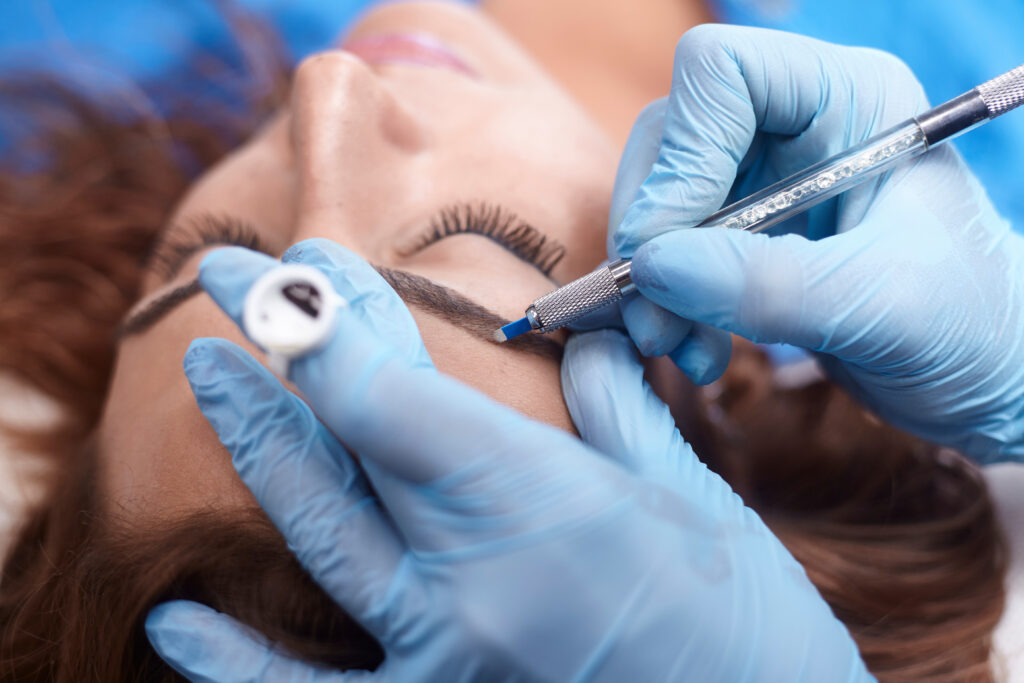
Microblading is a form of semi-permanent tattooing used to fill in thin eyebrow areas safely and non-invasively. Microblading tattoos are typically performed by licensed estheticians at salons or spas, using hand-held needles to draw the design.
Though this procedure may not be right for everyone, it can be helpful for people with sparse or thin brows.
It is a semi-permanent tattoo
Microblading is a semi-permanent tattoo. Although not the same as permanent inking, microblading offers an ideal alternative for people who wish to have their eyebrows inked without having to undergo more painful and expensive processes.
Microblading differs from tattooing in that it only punctures the top layer of skin using a hand tool; thus causing less damage and an faster recovery period.
Microblading offers another advantage of being more natural-looking due to artists following your natural hair strokes rather than trying to mimic them with machines.
Before opting for microblading procedures, be sure to find a reputable technician who adheres to stringent health regulations. They should possess either an occupational license or inspection from your local health department.
What To Expect During a Microblading Procedure?
Microblading is a semi-permanent tattoo procedure used to achieve natural-looking eyebrows, performed by licensed technicians using special tools.
Microblading involves implanting pigment into the skin using microblades - tiny needles inserted through tiny slits - in hundreds of precise strokes that mimic eyebrow hairs.
Your eyebrows typically require up to ten days post-procedure for full healing, though there may be temporary redness and swelling which will resolve within 24 hours of treatment.
Aava suggests applying numbing cream to the eyebrow area to alleviate discomfort during microblading sessions. She warns against applying Retin-A or other Retinoid products directly before and after microblading sessions as these ingredients could potentially fade the pigment used in microblading treatments.
Microblading results vary, with most technicians suggesting they last between 12-18 months before needing touch-ups. How quickly your brows fade can influence this decision, along with lifestyle factors like sun exposure and skincare routine.
Is Microblading Painless?
Microblading is a semi-permanent tattoo procedure used to create natural-looking eyebrows. It's ideal for women with sparse or thin eyebrows or those experiencing hair loss due to medical conditions like Alopecia.
Microblading should be a relatively painless experience if performed by a qualified artist who uses an effective numbing cream with lidocaine, benzyl alcohol and tetracaine as active ingredients.
Applying a numbing cream before microblading sessions is critical to their safety and the wellbeing of your skin. Aside from providing relief during microblading sessions, the use of such an anti-swelling product can also reduce bleeding during sessions.
Numbing cream offers another benefit of efficiency for artists; it allows them to see exactly where the pigment will go.
However, if any discomfort arises during your microblading procedure, be sure to inform the artist right away. Microblading has the potential for infections and allergic reactions which should be discussed with them beforehand so as to avoid infection or allergic reactions in any cases of possible health concerns or sensitivities.
Is Microblading Permanent?
Microblading is an ideal choice if you desire a natural-looking brow. As a semi-permanent procedure, its effects typically last four to eight weeks depending on your skin type and care practices.
An ideal salon will boast skilled and licensed estheticians with training in cosmetic procedures. Furthermore, they should utilize sterile equipment and disposable tools, while providing you with detailed aftercare instructions.
Your technician should also ask if there are any allergies to organic pigments; though allergic reactions are usually mild.
Infections are rare but possible; if tools used for microblading aren't sterile or pigments become contaminated while traveling through your skin they could lead to infections.
If you do develop an infection, consult your physician. They may prescribe antibiotics for effective treatment and eliminate any skin care products which might worsen it, such as alpha-hydroxy acids or glycolic acid-based products.





